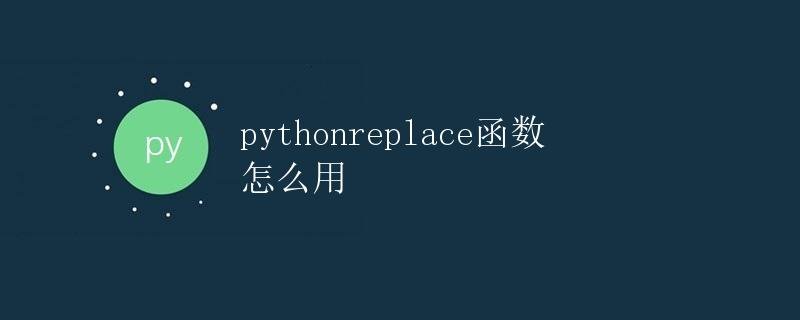Detailed explanation of the replace function in Python
Detailed Explanation of the Replace Function in Python

In Python, the replace function is used to replace a specified substring in a string. Its syntax is:
str.replace(old, new[, count])
Where str is the string to be operated on, old is the substring to be replaced, new is the new string to be replaced, and count is the number of replacements to be performed (optional parameter, defaults to replacing all).
Let’s explain the usage of the replace function in detail.
Basic Usage of the replace Function
First, let’s look at a simple example to demonstrate the basic usage of the replace function:
# Define a string
text = "hello world"
# Use the replace method to replace a string
new_text = text.replace("world", "python")
print(new_text)
The output is:
hello python
In this example, we replace “world” with “python” in the string text and assign the new string to the new_text variable.
Replace a Specified Number of Times
The replace function can also specify the number of replacements to perform, for example:
# Define a string
text = "hello world, hello World, hello WORLD"
# Replace only once
new_text = text.replace("world", "python", 1)
print(new_text)
The output is:
hello python, hello World, hello WORLD
In this example, we replace “world” with “python” in the string text, but only once, so only the first occurrence of “world” is replaced.
Case Sensitivity
The replace function is case-sensitive by default, meaning that the replacement is case-sensitive. If we want to ignore case, we can use a regular expression replacement.
import re
# Define a string
text = "hello world, hello World, hello WORLD"
# Use a regular expression replacement, ignoring case
new_text = re.compile(re.escape("world"), re.IGNORECASE).sub("python", text)
print(new_text)
The output is:
hello python, hello python, hello python
In this example, we use a regular expression to replace “world” with “python,” ignoring case.
Notes
When using the replace function, please note the following:
- The replace function returns a new string; the original string remains unchanged, so the result of the replacement must be assigned to a new variable.
- If the substring to be replaced does not exist in the original string, the replace function will return the original string without an error.
- The replace function can only replace an entire substring; it cannot replace part of a substring.
Summary
Through this article, we have explained in detail the use of the replace function in Python, including basic usage, specifying the number of replacements, case sensitivity, and other precautions.